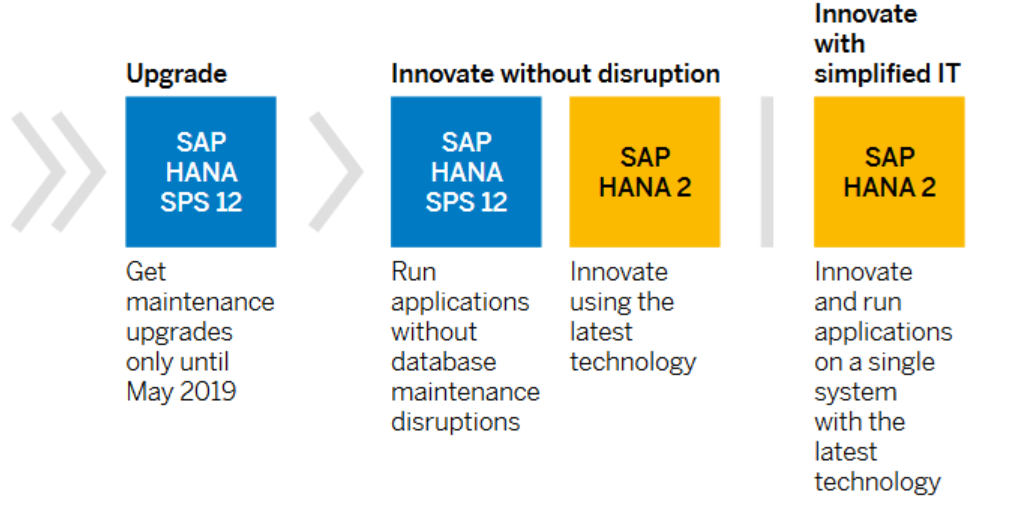Take
an introductory tour through the SAP HANA environment from a consultant’s
perspective. Find out the details behind SAP HANA 1.0 and SAP HANA 1.0 Support
Package 03, how the new technology differs from existing SAP offerings, and
potential scenarios for implementing SAP HANA.
Key concept
SAP HANA 1.0 Support Package 03 allows
an SAP NetWeaver BW 7.3 system to be
run entirely on a HANA database. This set-up potentially offers substantial
performance improvements for both data reporting and loading.
SAP
HANA — (Learn from SAP HANA trainingby experts from Learn IT Training) techniques must be developed, and SAP HANA
is the culmination of at least 10 years of technological change. Computers have
changed over time in line with Moore’s law about trends in computing. In 2002,
CPU speed stopped increasing (3 GHz) and progress continued elsewhere. Main
memory and the number of CPUs increased. These trends are continuing and have
pushed software developments in alternative directions to make use of these
improvements.
SAP
HANA brings the potential to improve corporate systems on a massive scale — and
on a level similar to the move from mainframe to client-server, or magnetic
tape to disk storage. For example, in the long term, SAP HANA could:
Allow
real-time reporting on transactions posted within current SAP ERP Central
Component (ECC) technology.
Support
processing of transactions (although this introduces many complexities and
technical challenges, such as table-locking and resilience). A single SAP HANA
system could deliver both business transactions (currently provided by SAP ECC)
and analytics (currently delivered by SAP NetWeaver BW know about business
warehouse from SAP BW training).
SAP
HANA centers on in-memory computing technology. The term HANA refers to both a
technology and product. As this can be confusing, within this article I refer
to SAP HANA technology or SAP HANA products. To make things more complex, SAP
has now released a second version of the product (SAP HANA 1.0 Support Package
03), which contains functionality that is very different compared to the first
version (SAP HANA 1.0).
Both
SAP HANA 1.0 and SAP HANA 2.0 do not support the encryption of database traces
and data backups. It should also be noted that for encrypting data backups a
suitable third-party tool must be utilized with the backint interface. And the
same should be applied to the database trace, which are not encrypted either. A
great generic recommendation is to avoid large tracing files on Operating
System level.
Given
below are the improvements and enhancements that are seen in SAP HANA 2.0 over
the previous version:
High availability and disaster
recovery/backup and recovery
- Optimized workload for third party backup tools by consolidation of SAP HANA log backups.
- Automated orchestration of HA/DR processes with highly improved SAP Landscape Management integration.
- Load balance read-intensive operations between primary and secondary instances of SAP HANA with the active / active-read enabled mode.
- Simplification of monitoring of security alerts and configuration of security and users in the latest SAP HANA cockpit. Learn about HANA tools from SAP HANA course.
- Minimize TCO by utilizing existing LDAP groups for automatic role assignment.
- Protect data at rest by utilizing SAP HANA’s holistic encryption for data and redo log files.
- Manage multiple tenants, one instance, or thousands of SAP HANA instances within the SAP HANA Cockpit administration and monitoring tool. (these are the tools used in administration see SAP HANA ADMIN training overview for more details by Learn IT Training)
- Manage system thresholds and prohibit run-away queries and with enhanced workload management.
- Minimize cost and time when executing change by comparing, capturing, and analyzing various workload replays.
To register for free demo on SAP
courses Click Here
For more details visit:
www.learnittraining.com
Email:
contact@learnittraining.com
Contact: India +91 9912989639
USA +12108585008

Comments
Post a Comment